With Edinburgh’s Hogmanay celebrations going online this year, we’re taking a behind-the-scenes look at some of the surprising minerals that would have made the traditional New Year’s fireworks go off with a bang!

What’s in a firework?
So, you light a firework, you stand back and WOOSH, off it shoots into the air. A few seconds wait and then BOOM, the firework explodes in a shower of coloured sparkles raining down in the sky.
To get this sequence of events, you need three basic things: something to get the firework up in the air, something to make the coloured sparkles, and something to distribute the colour into that classic firework burst.
When you light the fuse of a firework, you start a carefully calculated chain reaction. That initial shot up in the air is caused by a small charge of gunpowder being ignited and exploding in the fireworks’ shell (the mortar). This explosion in a confined space creates lots of heat and gas, which builds up pressure to propel the main body of the firework (the aerial shell) up into the air. This first explosion also lights a time-delay fuse in the aerial shell. That fuse is long enough, and burns slow enough, that it allows time for the firework to get high in the sky before the next link in the chain is triggered.
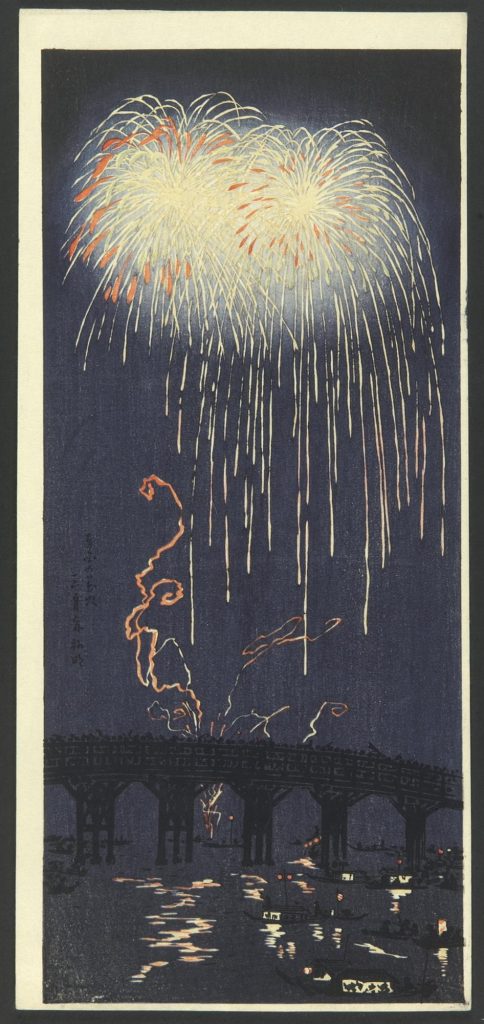
The aerial shell comes into play next and is full of gunpowder and ‘stars’. The gunpowder handles distribution, when it is ignited by the time-delay fuse it explodes and scatters the stars across the sky in various shapes. This explosion, once again, causes lots of heat and produces gasses which rapidly expand. The bang of a firework is actually caused by these rapidly expanding gasses and not by the explosion proper. You are hearing a sonic boom because this happens faster than the speed of sound!
“But what are the ‘stars’?” I hear you ask. Well, ‘stars’ are the name given to tiny little balls of chemicals embedded within the aerial shell. When these explode light is produced, so these are the visible part of the firework. Modifications to the chemical compounds within the stars and the arrangement of stars within the firework itself are how different effects are created, such as multi-phase fireworks, different colours, crackles, or shapes.
Gunpowder
We promised you minerals, didn’t we?
Gunpowder is a mix of three chemicals: potassium nitrate, charcoal and sulphur. Much of the potassium nitrate, otherwise known as saltpetre, used in modern fireworks is synthetic (man made in factories) but historically natural potassium nitrate, the mineral nitre, was used. Here is some nitre from our collections. The forms in dry desert- like environments and is very water soluble, so we must keep it in sealed containers to prevent it from dissolving due to the moisture in the air.
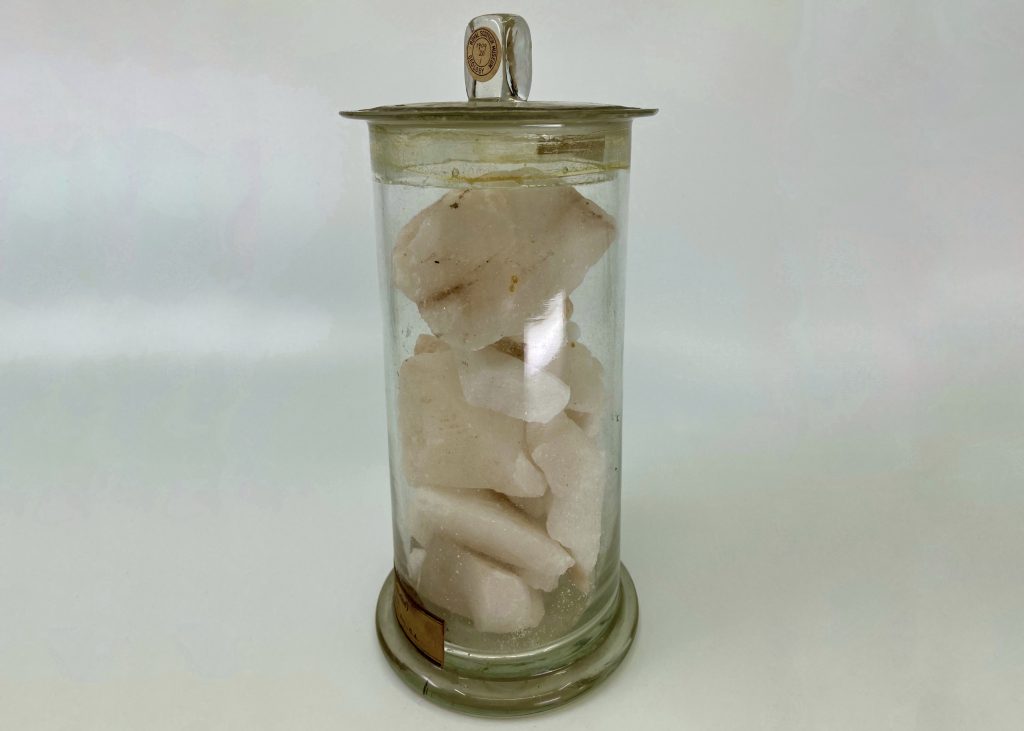
Nitre from the Atacama Desert in Chile, donated in 1909 by G. A. Gardener 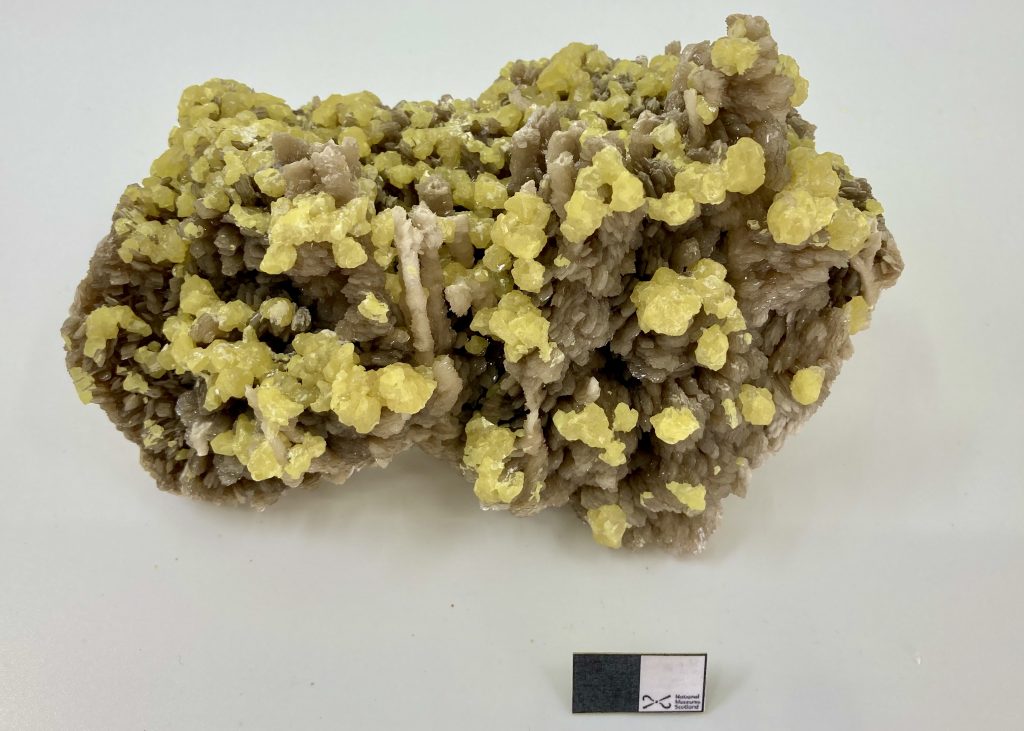
Sulfur crystals on calcite from sulfur mines in Maków, Poland
Nitre doesn’t burn on its own; it’s actually the reaction with sulphur and the carbon in charcoal that creates a bang. Sulphur is found naturally in its native state as bright yellow crystals, commonly near to volcanoes like Mt Vesuvius.
Ok, but where do the colours come from?
We’ve covered the explosive parts of the fireworks, but how about the rainbow of colours they produce?
Fireworks originated in China over 1,000 years ago, but it’s said that Italians were the first to add colour to fireworks by mixing gunpowder with local minerals such as gypsum and calcite. These minerals contain various elements and metal salts that produce different coloured light when heated. Here are some examples of firework colours and the minerals that make them.
Red: Strontium is the element commonly used to create strong red colours as a firework explodes. Named after the Scottish village in which it was first discovered (Strontian), Strontium is mined from the minerals strontianite (strontium carbonate) and celestine (strontium sulphate).
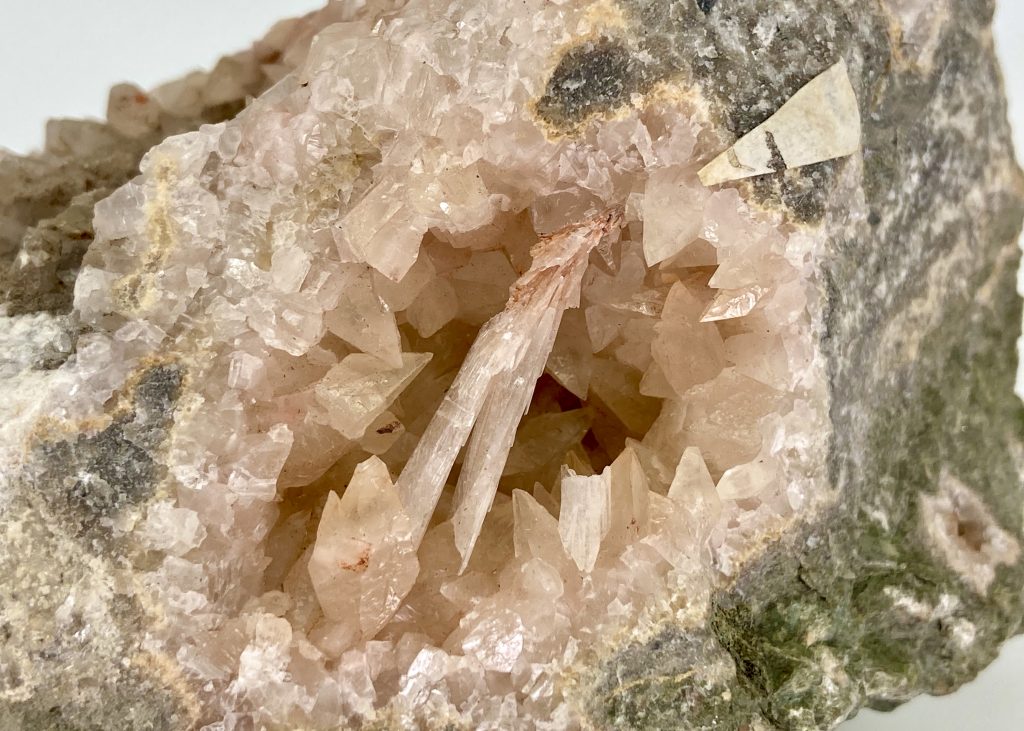
Pink celestine crystals collected from North Berwick by Alexander Craig Christie in the late 19th century. 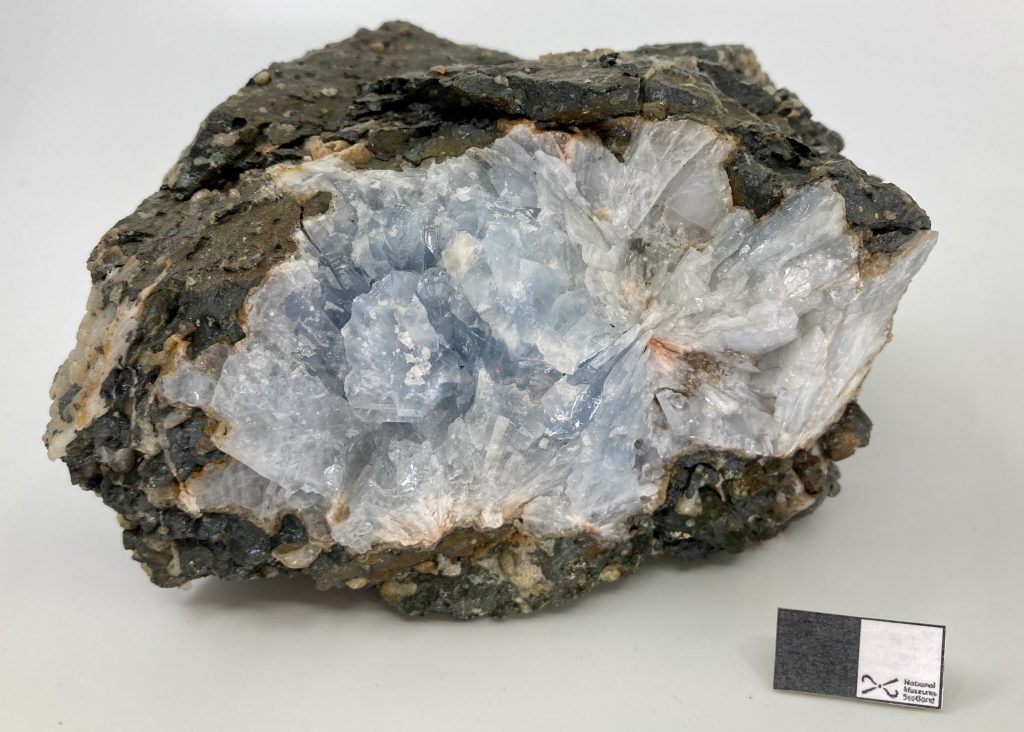
The blue variant of celestine crystals 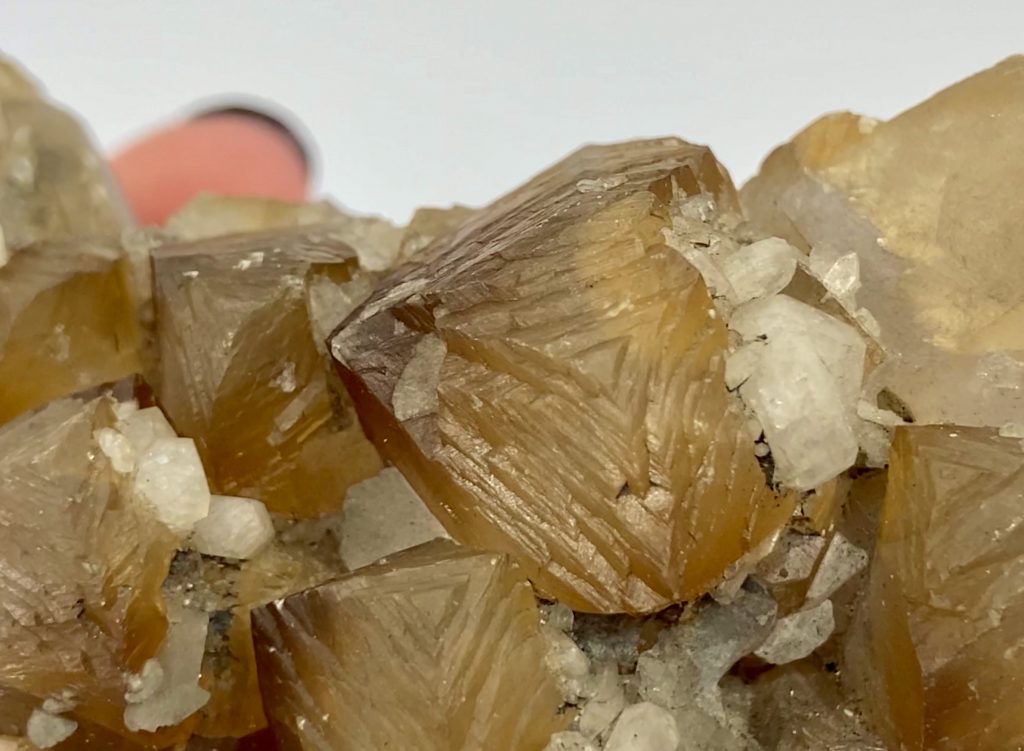
Classic brown calcite from Strontian. Their ‘stepped pyramid’ form is unique to Strontian specimens
Orange: The minerals gypsum and calcite contain the element calcium, which is used to create a fiery orange light. Calcium salts are also sometimes mixed into fireworks to enhance other colours.
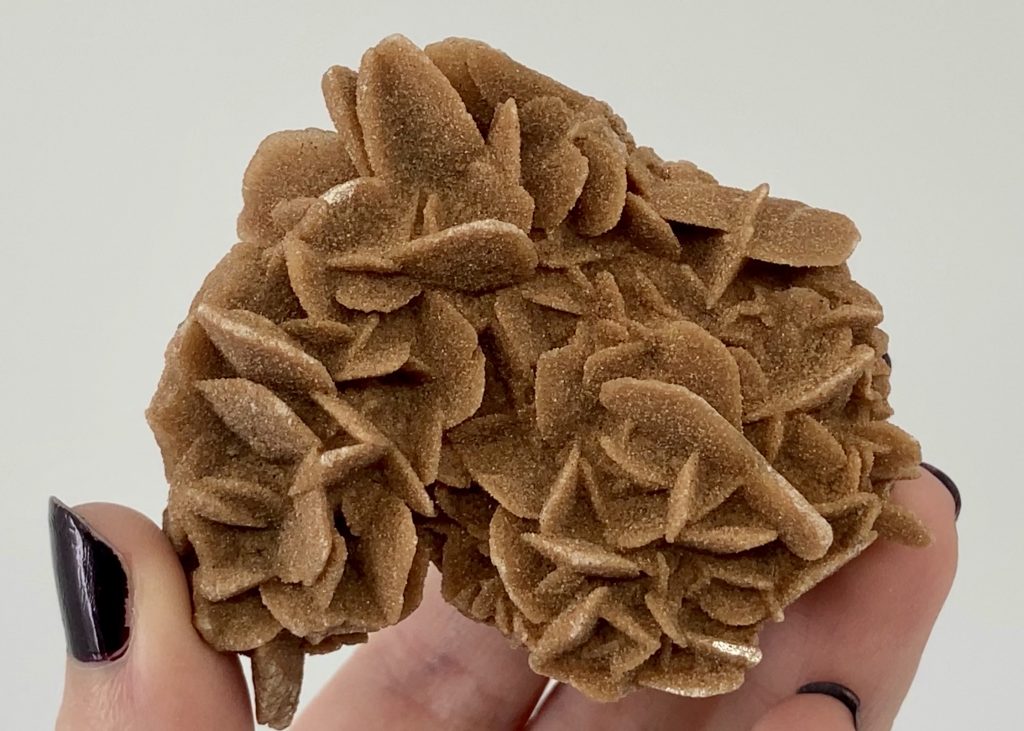
Green: Emerald greens are the result of barium salts being included in fireworks. Barium is very chemically reactive and is extracted from minerals such as baryte.

Blue: Copper compounds serve double duty in fireworks, depending on their chemistry. Some copper salts such as CuCl produce wonderful turquoise-greens, whereas others like CuCl2 produce vibrant blues (who remembers copper sulphate from school?). The copper in these compounds can be extracted from minerals such as chalcopyrite or azurite, or dug out of the ground in its native state.
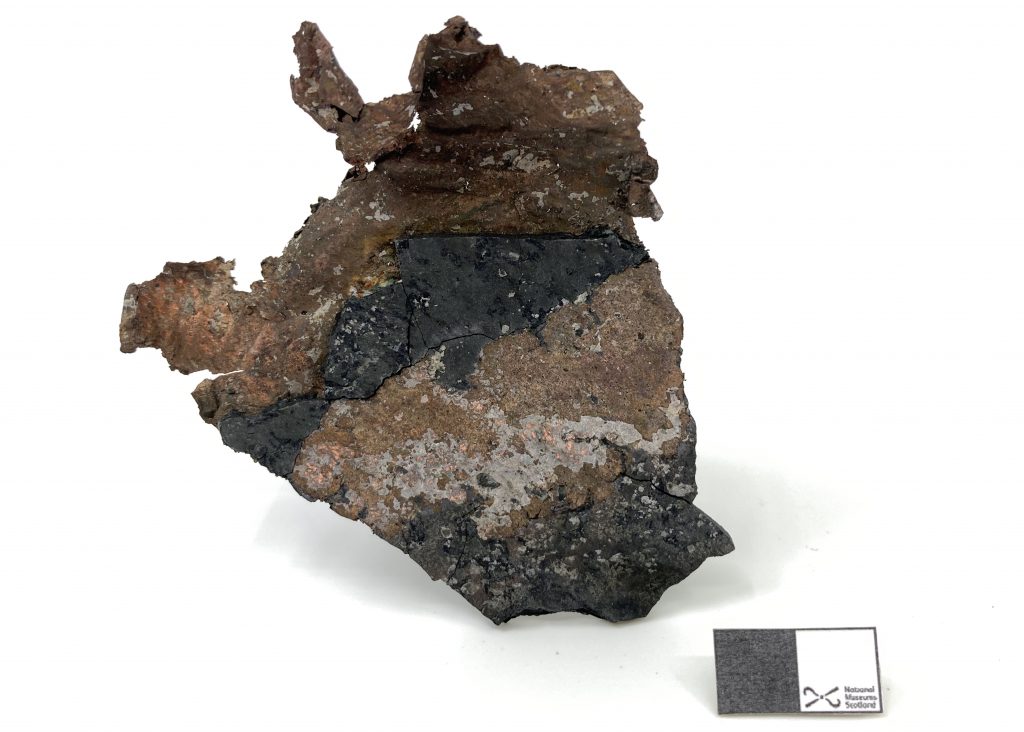
Purple: The caesium in minerals like pollucite can be used to make caesium nitrate, a compound that produces a deep purple-blue colour. Caesium nitrate is also very useful in a firework as it is an oxidising compound and helps the firework to go out with a bang!
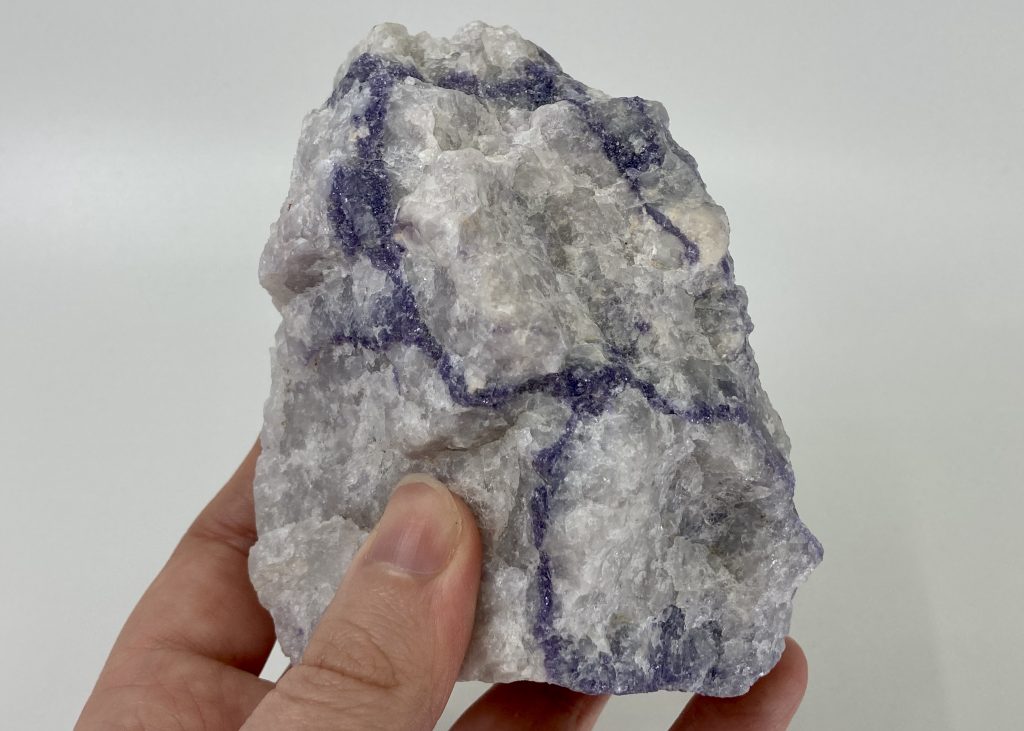
Pink: Lithium salts produce a pink light. Lithium is found in 22 different minerals but today is commonly mined from the mineral spodumene.

White: Flashes of brilliant white can be made using multiple different compounds, derived from different minerals. Most common is Aluminium, which is the third most abundant element in the world and is found in over 800 different minerals! Barium oxide, magnesium and zirconium are also used to create bright and silvery-whites.
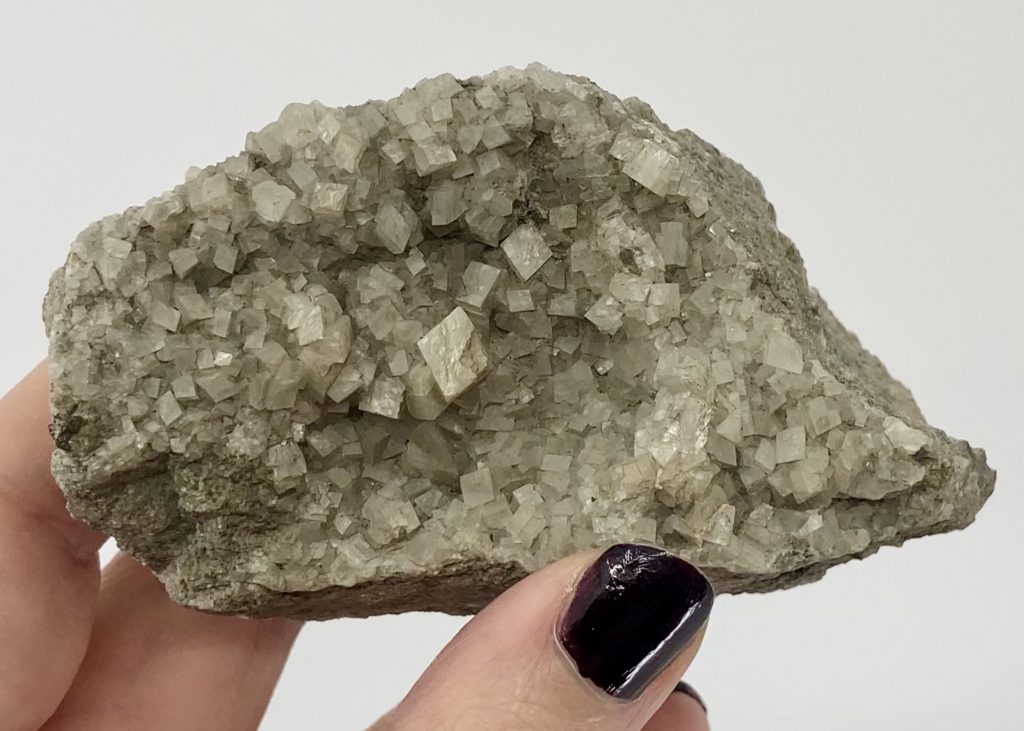
A dolomite rhomb from Cornwall 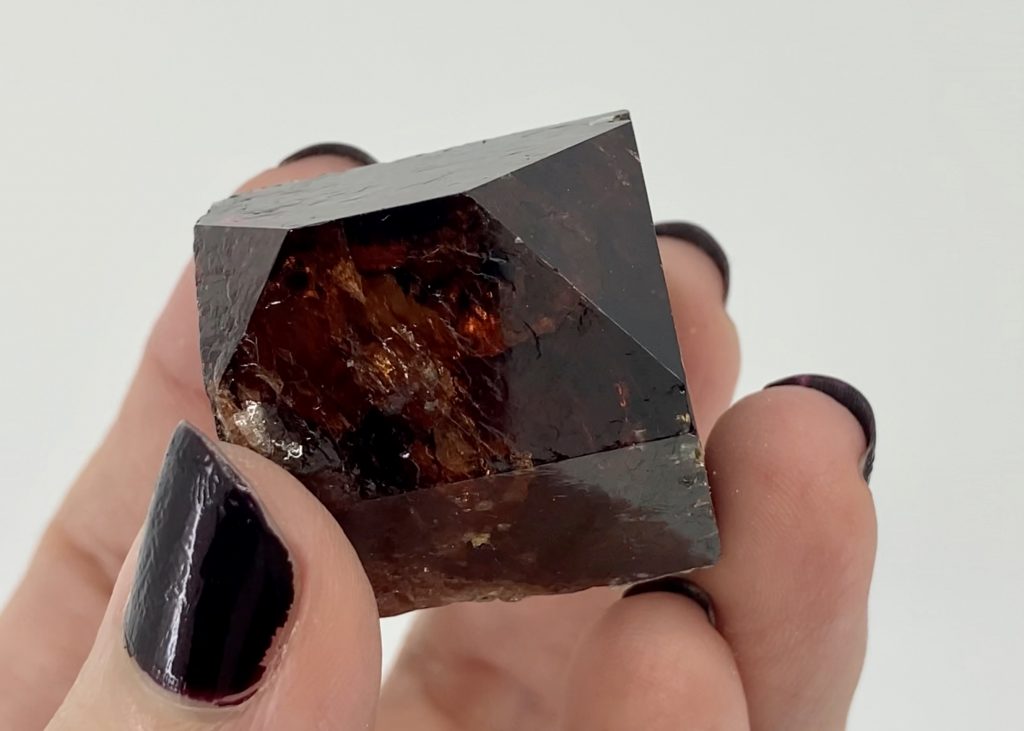
A sci-fi sounding zircon crystal containing zirconium
Now, add a little sparkle
Elements derived from minerals are also used to add flourishes. A great example is iron, which extracted from minerals such as hematite is used to add sparks to fireworks, to help give them their classic rain of sparkles!
How many minerals you can count going bang! in the night sky this Hogmanay? Put your new-found knowledge to the test, and let us know if you spot any mystery colours and we’ll get our Natural Sciences team on the case.